No evacuation orders issued for residents living near Soufriere volcano, St. Vincent and The Grenadines
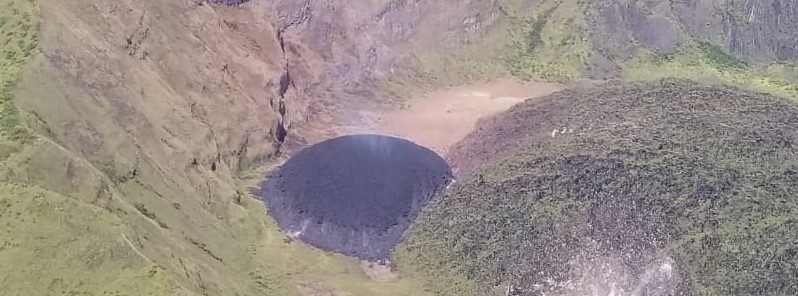
On Sunday, January 3, 2021, the National Emergency Management Organization (NEMO) advised all citizens and residents of St. Vincent and The Grenadines that no evacuation order has been issued to any section of the population.
- False information about evacuation orders for residents living near Soufriere volcano was published in several local and international media outlets.
- The alert level remains at Orange.
- The Volcano continues to exude magma on the surface and steam can still be observed from the Belmont Observatory.
- Persons living in areas close to the volcano should expect strong sulfur smells for several days to weeks, depending on changes in wind direction.
"Several media outlets both locally and abroad have published false information to this effect. These reports are inaccurate and misleading," NEMO officials said at 17:00 UTC on January 3, 2021.
The organization reminded all citizens and residents to always ensure that any information regarding the La Soufriere Volcano and the current emergency are from credible and official sources only.
The official sources of information in this regard are the NEMO and the UWI Seismic Research Center (SRC).
NEMO said they continue to monitor the ongoing activity at the La Soufriere volcano with assistance from the team of experts from the UWI SRC, lead by Professor Richard Robinson, and 'would update the nation of any change in status as soon as this occurs.'
The alert level remains at Orange.
Aerial flight observations continue, when possible, over the crater to track changes to the growing dome.
The volcano continues to be dangerous and the public is advised to avoid the area, UWI-SRC said.
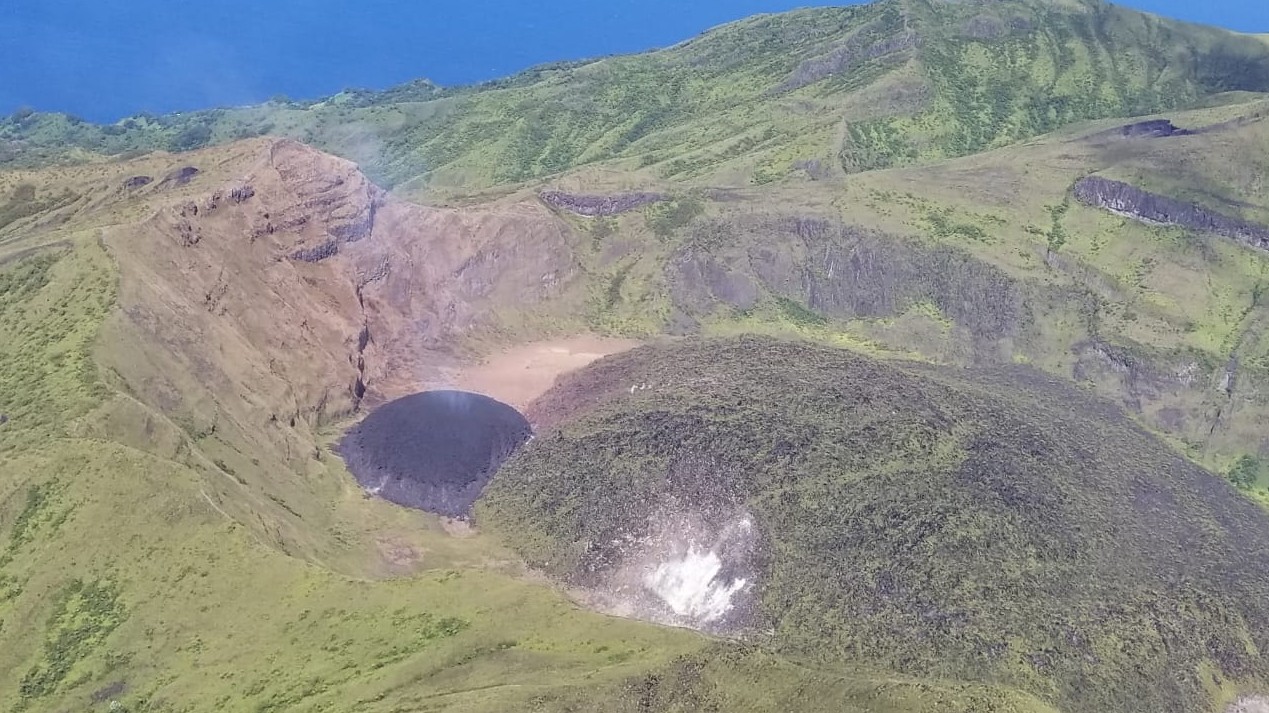

Soufriere volcano on Sunday, January 2, 2021. Credit: UWI-SRC/Jason Veira.
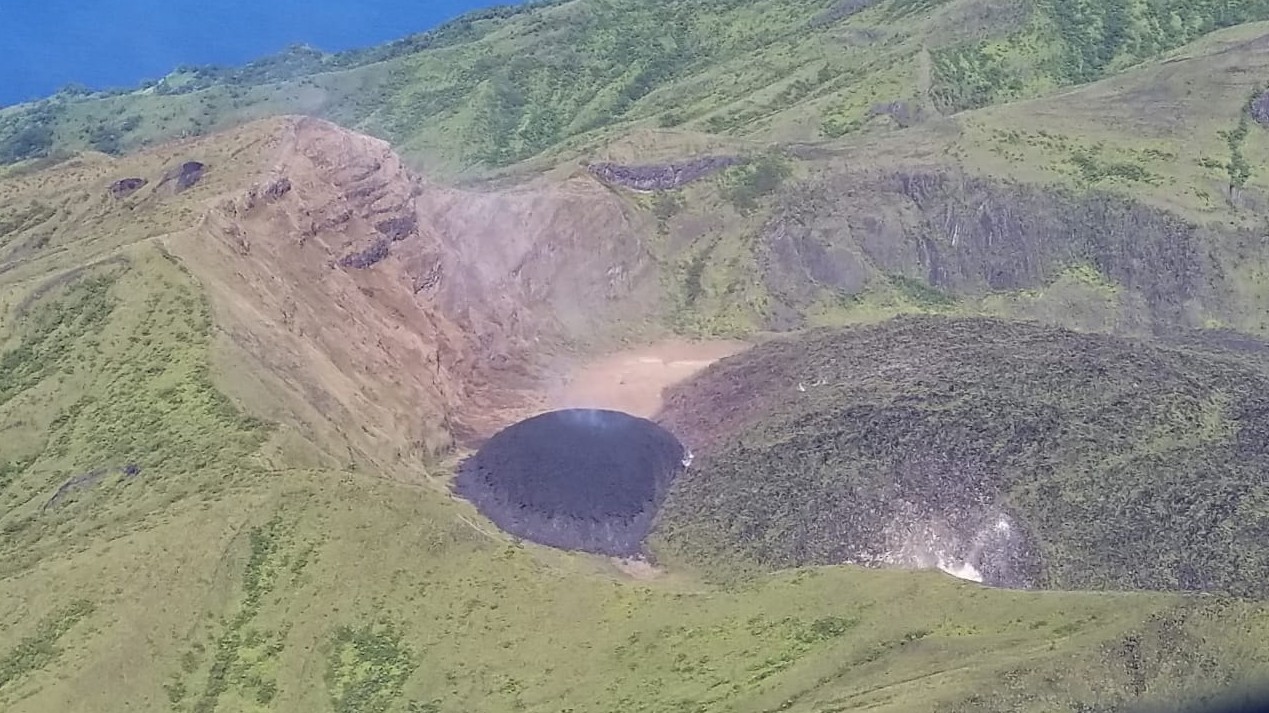

Soufriere volcano on Sunday, January 2, 2021. Credit UWI-SRC/Jason Veira.
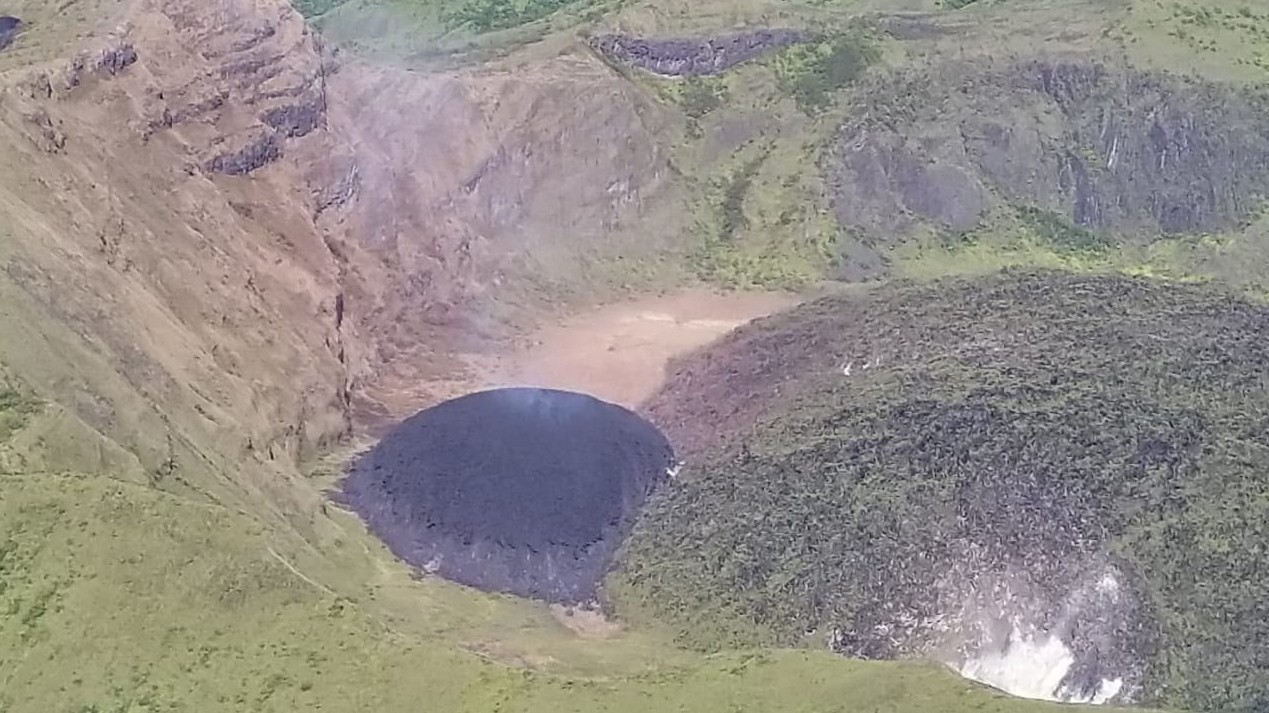

Soufriere volcano on Sunday, January 2, 2021. Credit: UWI-SRC/Jason Veira.
The UWI-SRC team led by Vincentian Geologist Prof. Richard Robertson continued their work to upgrade the Volcano Monitoring System on Saturday, January 1.
A Web Cam Monitoring System was installed at Rose Hall to constantly monitor the summit of the Volcano. A Data Centre was also established at the Observatory at Belmont, to analyze the data collected from the volcano. The team also conducted an alternate site exploration at Fancy and other areas to identify new sites where equipment will be installed.
The North Leeward District Disaster Committees met last Wednesday, December 30, 2020, to sensitize members of the communities and to review the Volcano Emergency Plans developed in 2019, in preparation for the Trade Winds Exercise. During this meeting, the members of the committees revisited the rendezvous point and the vulnerable person’s database.
The disaster committees will meet this week to sensitize the members of the communities and to update their community evacuation plans.
NEMO is also appealing to the public to desist from visiting the La Soufriere Volcano until the scientists advise that it is safe to do so.
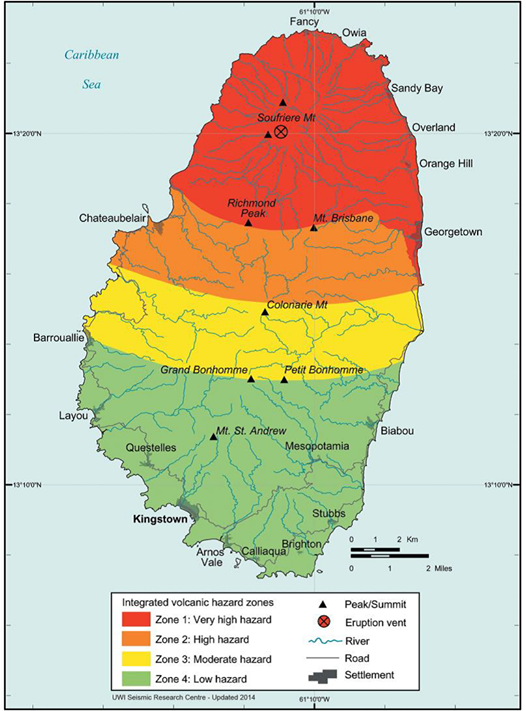

Volcanic Hazard Map – St. Vincent.
The map only shows hazard zone on land. However, lahars and pyroclastic falls, flows and surges will also impact areas offshore to varying degrees, and as such, the hazard zones must be envisaged as extending some distance offshore.
Hazard Zone 1 (Red Zone) – Very High Hazard:
This includes all areas expected to experience maximum damage in the short term and is the zone where all hazardous events have their greatest influence. It is defined by the zone of expected total destruction from pyroclastic flows, surges, and mudflows and by the zone of maximum expected damage from all projectiles. This zone is likely to experience more than 30 cm (12 inches) of ash. During the course of an eruption, this zone would be unsuitable for human habitation.
Hazard Zone 2 (Orange Zone) – High Hazard:
This includes all areas of moderate pyroclastic flow and surge hazard, areas within the 5 km (3.1 miles) projectile zone, and areas likely to experience between 10 and 30 cm (4 – 12 inches) of ashfall. These areas will be affected in a similar manner as Zone 1 during large scale eruptions.
Hazard Zone 3 (Yellow Zone) – Moderate Hazard:
This zone will be free from the effects of flows and surges but will be affected by 5 to 10 cm (2 – 4 inches) thick ashfalls, minor earthquakes and lightning strikes. This zone will experience significantly less physical damage than Zones 1 and 2.
Hazard Zone 4 (Green Zone) – Low Hazard:
This zone includes areas likely to be relatively safe from hazardous events, except for minor ashfall of less than 5 cm (2 inches). Crop damage and disruption of water supply due to ashfall will be the main effect but other physical damage will be minimal.
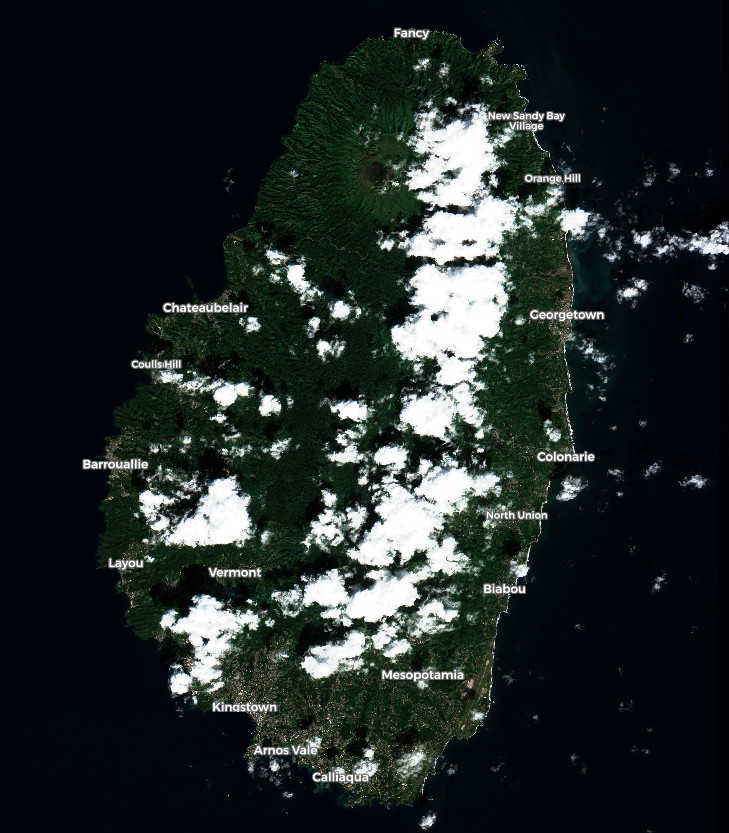

St. Vincent island on December 9, 2020. Credit: Copernicus EU/Sentinel-2, TW
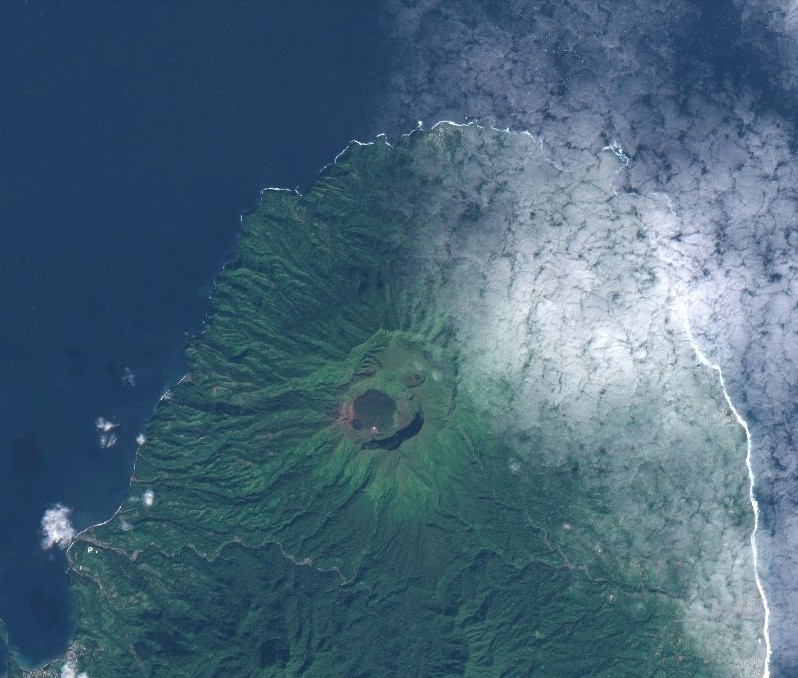

Soufriere volcano on January 3, 2021 – Natural color. Credit: Copernicus EU/Sentinel-2, TW
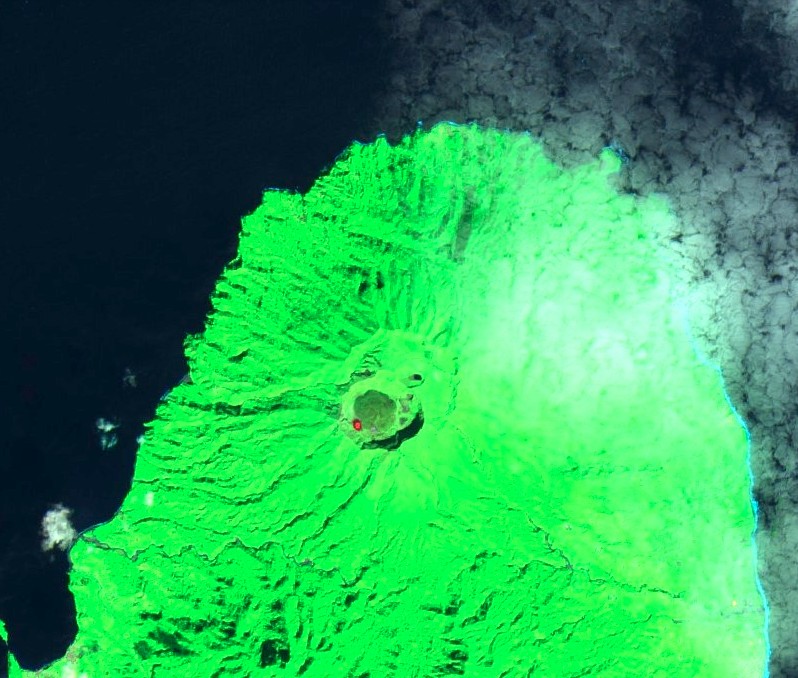

Soufriere volcano on January 3, 2021 – SWIR. Credit: Copernicus EU/Sentinel-2, TW
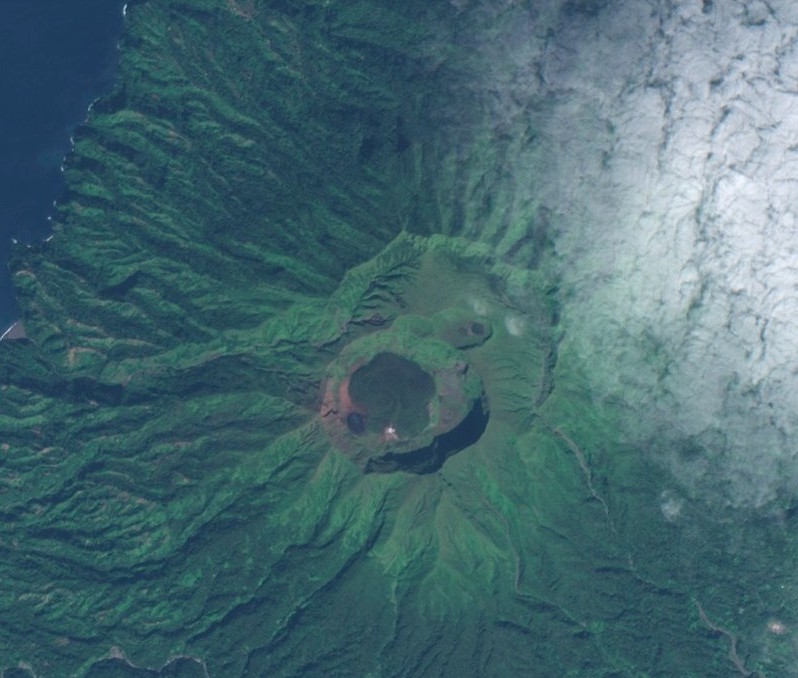

Soufriere volcano on January 3, 2021 – Natural color. Credit: Copernicus EU/Sentinel-2, TW
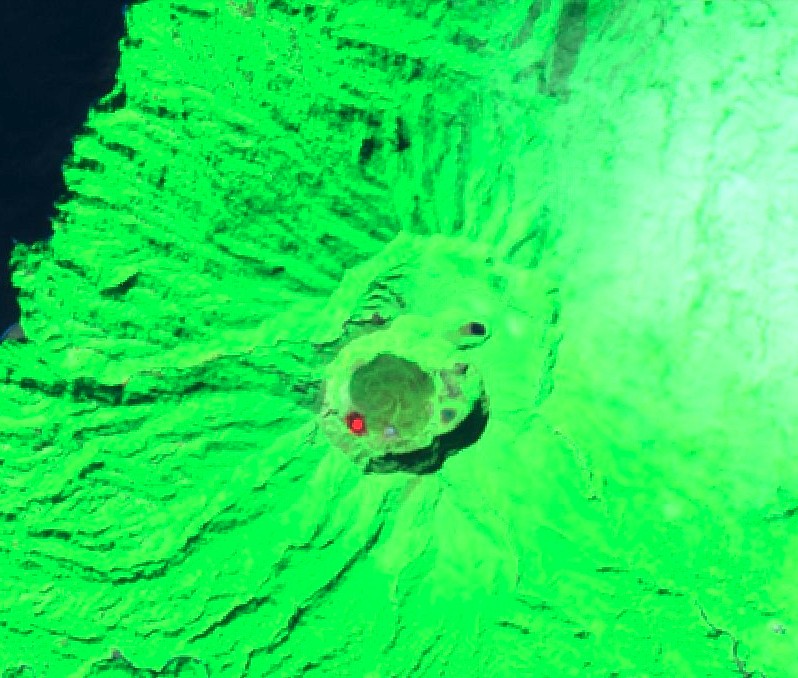

Soufriere volcano on January 3, 2021 – SWIR. Credit: Copernicus EU/Sentinel-2, TW
Geological summary
Soufrière St. Vincent is the northernmost and youngest volcano on St. Vincent Island. The NE rim of the 1.6 km (1 mile) wide summit crater is cut by a crater formed in 1812.
The crater itself lies on the SW margin of a larger 2.2 km (1.3 miles) wide Somma crater, which is breached widely to the SW as a result of slope failure.
Frequent explosive eruptions since about 4 300 years ago produced pyroclastic deposits of the Yellow Tephra Formation, which blanket much of the island.
The first historical eruption took place in 1718; it and the 1812 eruption produced major explosions.
Much of the northern end of the island was devastated by a major eruption in 1902 that coincided with the catastrophic Mont Pelée eruption on Martinique.
A lava dome was emplaced in the summit crater in 1971 during a strictly effusive eruption, forming an island in a lake that filled the crater prior to an eruption in 1979.
The lake was then largely ejected during a series of explosive eruptions, and the dome was replaced with another.
Featured image: Soufriere volcano on Sunday, January 2, 2021. Credit: UWI-SRC/Jason Veira.

Look at the size of the old crater. This new smaller might be the start of somtehing much bigger.